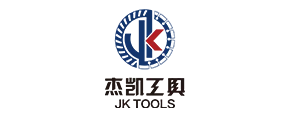How Do I Choose The Right Saw Blade(2)
How Do I Choose The Right Saw Blade(2)
Gullet
The gullet is the space in front of each tooth to allow for chip removal. In a ripping operation, the feed rate is faster and the chip size is bigger, so the gullet needs to be deep enough for the large amount of material it has to handle. In a crosscutting blade, the chips are smaller and fewer per tooth, so the gullet is much smaller. The gullets on some crosscutting blades also are purposely sized small to inhibit a too-fast feed rate, which can be a problem especially on radial-arm and sliding miter saws.The gullets of a combination blade are designed to handle both ripping and crosscutting. The large gullets between the groups of teeth help clear out the larger amounts of material generated in ripping. The smaller gullets between the grouped teeth inhibit a too-fast feed rate in crosscutting.
Hook Angle
Hook angle has an important effect on blade operation. A blade with high positive hook angle (say, 20 °) will yield a very aggressive cut and a fast feed rate. A low or negative hook angle will slow the feed rate and will also inhibit the blade's tendency to "climb" the material being cut. A blade for ripping lumber on a table saw will generally have a high hook angle, where an aggressive, fast cut is usually what you want. Radial-arm saws and sliding compound miter saws, on the other hand, require a blade with a very low or negative hook angle to inhibit overly fast feed rate, binding and the blade's tendency to "climb" the material.
Kerf Width
The width of the "kerf"-- the slot the blade cuts in the material-- is another important consideration. Many blade types are available in both full-kerf and thin-kerf varieties. Full-kerf blades typically cut a 1/8" slot and are intended for use on saws powered by 3 hp (or greater) motors.
in-kerf saw blades-- blades with a kerf thickness of less than 1/8"-- were developed for use on portable and contractor model table saws with motors of less than 3 hp. Because a thin-kerf blade has to remove less material than a full-kerf blade, it requires less power to operate and allows lower-powered saws to cut material at an appropriate feed rate without the risk of bogging down during the cut. (Bogging down causes excessive friction; as a result, the blade heats up and can become distorted or burn the cut surface.).
Potential trade-off for the thinner kerf is the fact that the blade plate is thinner and therefore might be expected to vibrate more than a thicker, more rigid plate. However, technological advances in blade design have generated thin-kerf blades that rival the best industrial-quality full-kerf saw blades. Vibration-dampening systems, like the one used with Freud thin-kerf blades, compensate for the slight loss of stability and make thin-kerf blades the optimum choice for lower-powered saws.

Saw Blade Teeth Quality
The teeth on most high-quality saw blades are thick carbide tips that have been fused (or brazed) to the steel blade plate. How long the blade will stay sharp, how cleanly it will cut and how many re-sharpenings it will take all depend on the quality of the cutting tips. On some of the best blades, the carbide is formulated specifically for the application of the blade, and a tri-metal brazing process is used to attach the carbide cutters to the blade plate. This process, in which a layer of copper alloy is sandwiched between layers of silver alloy, provides extra flexibility and impact resistance. At a minimum, look for a blade with C3 grade micro-grain carbide teeth, which are thick enough to allow a number of re-sharpenings.
We are custom saw blades suppliers. If you are interested in our products, please feel free to contact us.







